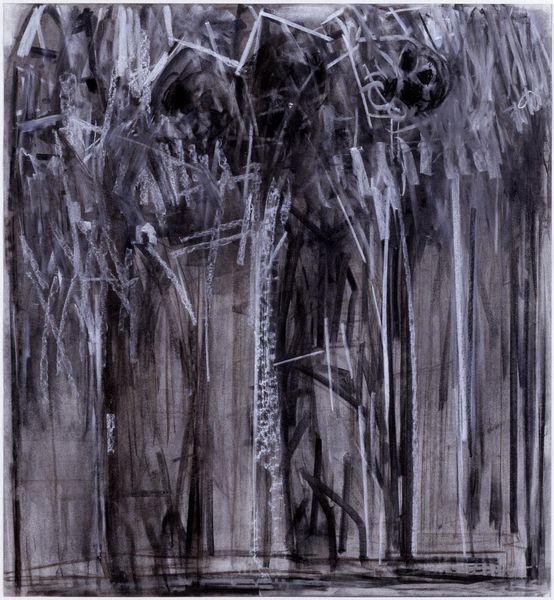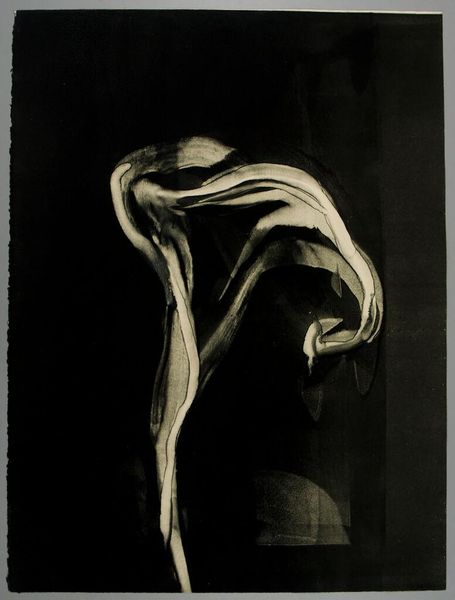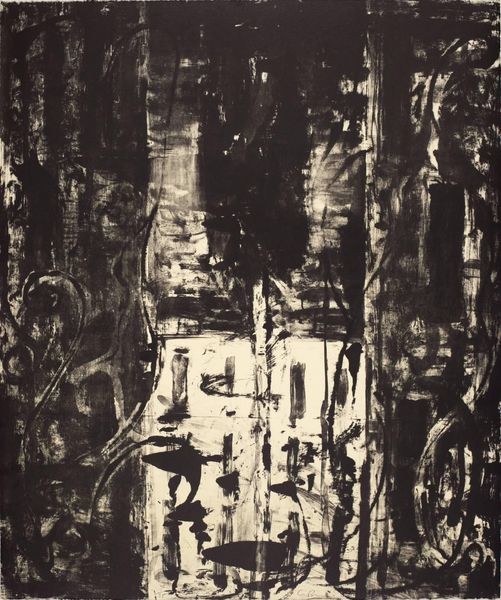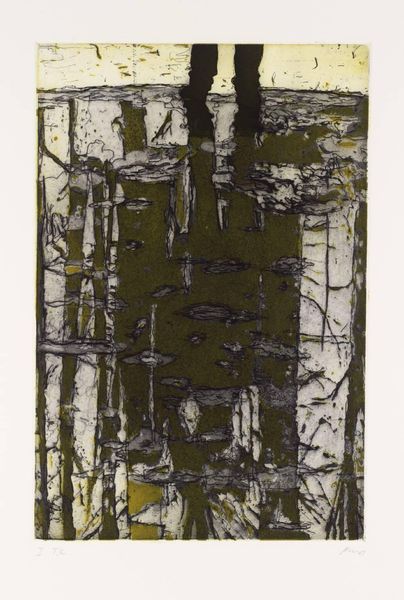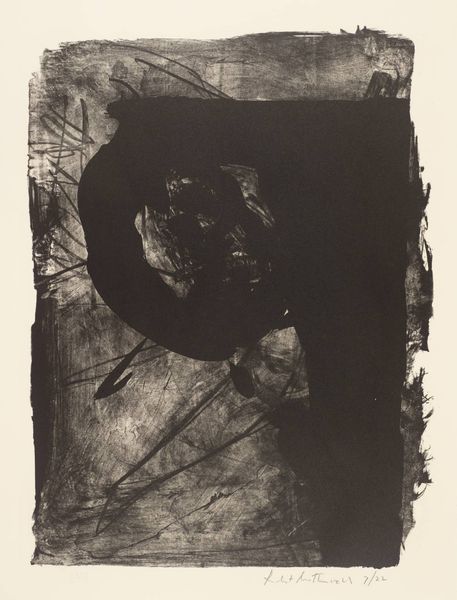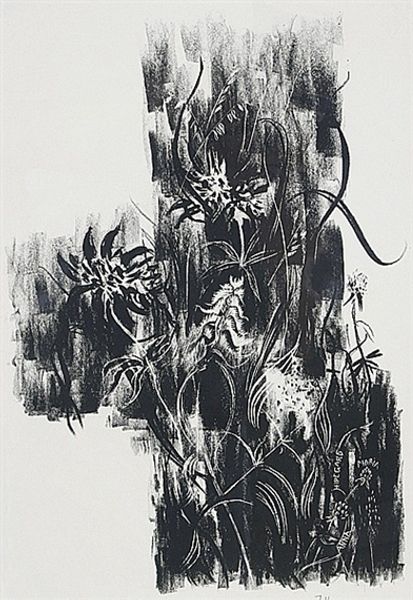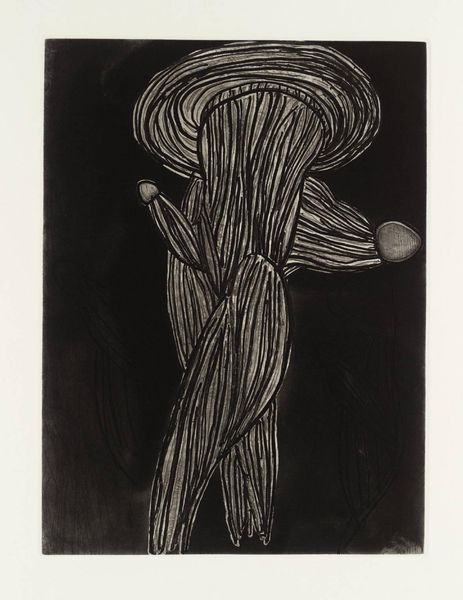
Dimensions: support: 1143 x 883 mm frame: 1384 x 1130 x 85 mm
Copyright: © Tate | CC-BY-NC-ND 4.0 DEED, Photo: Tate
Curator: This is Graham Sutherland's "Head III", currently residing here at Tate Modern. It's undated but presents a rather striking image. Editor: My immediate impression is one of starkness. The muted palette and skeletal subject give it a macabre, almost haunting quality. Curator: Indeed. Sutherland was deeply influenced by the wartime landscape. One could argue this piece reflects a broader anxiety about industrialization and its impact, particularly on the British countryside. The materials themselves contribute; oil on canvas, scaled to emphasize the subject's presence. Editor: It feels like a relic unearthed from some forgotten ritual. The "head" is almost totem-like, a stark symbol of decay presented with a strange elegance. I wonder, what did Sutherland intend to evoke? Curator: Perhaps a confrontation with mortality itself? The work defies easy categorization, blurring lines between natural history illustration, surrealist sculpture, and modernist painting techniques. It makes you wonder about the labor behind its making, the social context of its creation. Editor: It's unsettling, certainly. But I also find it strangely beautiful. It holds an energy that transcends its grim subject matter. Curator: A testament to the enduring power of art to provoke, even when confronting uncomfortable truths about our world. Editor: A final thought—it makes you consider that perhaps beauty can be found even in the darkest of places.
Comments
tatemodern 7 months ago
⋮
http://www.tate.org.uk/art/artworks/sutherland-head-iii-n06183
Join the conversation
Join millions of artists and users on Artera today and experience the ultimate creative platform.
tatemodern 7 months ago
⋮
Insects and fossils merge in Sutherland’s Head III. The painter would later insist that these hybrid creatures were not intended to be threatening. At the time, however, the critic Herbert Read identified in Sutherland’s work ‘the now prevailing cosmic anxiety’. Gallery label, October 2016
